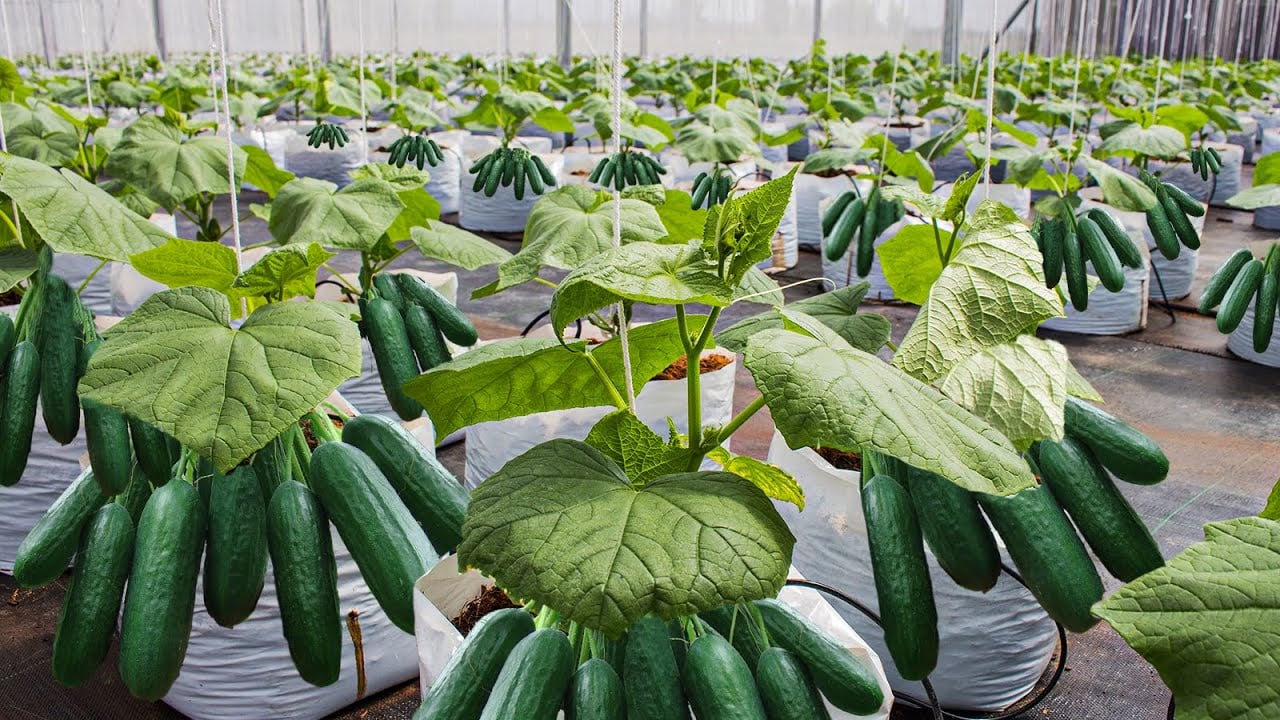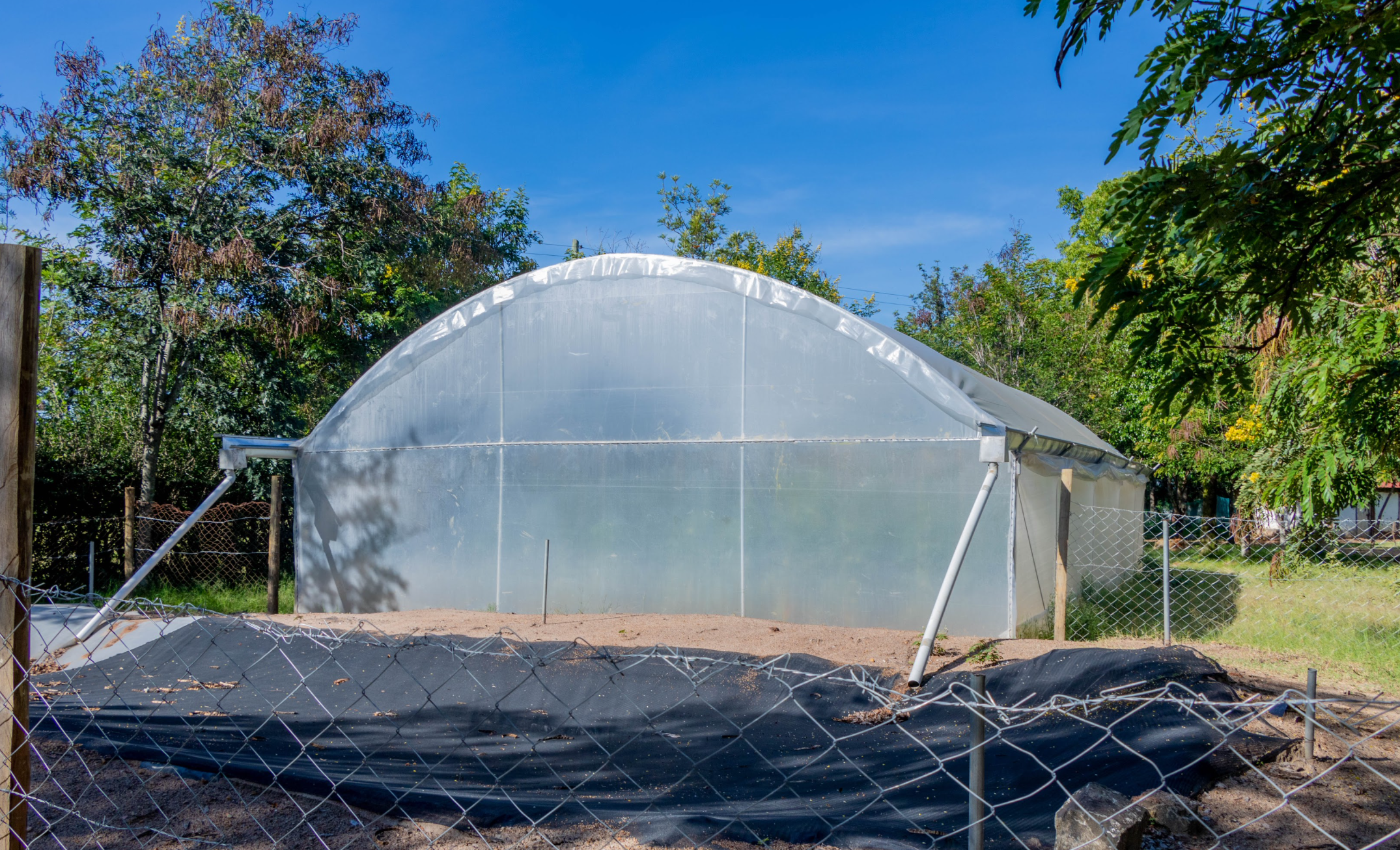Steps on How Farmers Can Grow Cucumbers in a Greenhouse

Greenhouse cultivation of cucumbers can be a fruitful venture for farmers, offering an extended growing season and precise control over growing conditions. Before we discuss the steps on how farmers can grow cucumbers in a greenhouse, let me enlighten you about the nutritional value of cucumbers.
Cucumber Nutritional Value
Cucumbers are low in calories and provide a range of essential nutrients. Here's an overview of the nutritional value of a typical 1-cup (approximately 104 grams) serving of raw, sliced cucumber:
- Calories: 16
- Carbohydrates: 3.7 grams
- Fiber: 0.5 grams
- Protein: 0.8 grams
- Fat: 0.2 grams
- Vitamin K: 10.2 micrograms (13% of the Daily Value)
- Vitamin C: 4.5 milligrams (8% of the Daily Value)
- Potassium: 152 milligrams (4% of the Daily Value)
- Magnesium: 13 milligrams (3% of the Daily Value)
- Folate: 19 micrograms (3% of the Daily Value)

Cucumbers are primarily composed of water, which makes them refreshing and hydrating. They also contain antioxidants and small amounts of other vitamins and minerals, including vitamin A, vitamin B6, and calcium. The skin of cucumbers is a good source of dietary fiber, which can aid in digestion.
Additionally, cucumbers are often enjoyed for their crisp texture and mild, refreshing taste. They are a popular choice in salads, sandwiches, and as a healthy, low-calorie snack.
Steps on how to grow cucumbers in a greenhouse
To ensure a successful harvest, here's what farmers should know about growing cucumbers in a greenhouse:
1. Selecting the Right Cucumber Varieties
Choosing the right cucumber varieties is crucial. Opt for compact and disease-resistant cultivars that perform well in a controlled environment.
2. Soil and Containers Matter
Use a well-draining potting mix for containers or raised beds within the greenhouse. Proper soil preparation is essential for healthy cucumber plants.
3. Temperature and Light Requirements
Maintain daytime temperatures between 75-85°F and nighttime temperatures above 60°F for optimal growth. Supplementary lighting may be necessary during winter months to ensure sufficient sunlight.
4. Implementing Support Systems
Cucumber plants can become large and heavy with fruit. To reduce disease risk and make harvesting easier, use trellises or support systems to keep the vines off the ground.
5. Proper Watering Techniques
Provide consistent and deep watering, ensuring the soil remains evenly moist but not waterlogged. Drip irrigation or soaker hoses can help maintain the necessary moisture levels.
6. Control Humidity
Greenhouses tend to have higher humidity levels, which can lead to disease issues. Use fans and vents to maintain proper ventilation and airflow.
7. Fertilization Strategies
Cucumbers are heavy feeders. Use a balanced, slow-release fertilizer or incorporate organic compost into the soil before planting. Regularly monitor plants for nutrient deficiencies.
8. Pollination Management
Cucumbers require proper pollination to produce fruit, and in a greenhouse, this might need assistance. Hand-pollination using a brush or gentle shaking can ensure successful pollination.
9. Pruning for Healthy Growth
Pruning can help manage plant size and shape. Removing excess leaves improves air circulation and reduces disease risk.
10. Pest and Disease Vigilance
Monitor for common cucumber pests and diseases such as aphids, spider mites, cucumber beetles, and powdery mildew. Consider introducing beneficial insects and use fungicides when necessary.
11. Harvesting Expertise
Cucumbers are best harvested at the desired size and color, usually 6-8 inches long. Regular harvesting encourages more fruit production, and using sharp scissors or pruning shears is recommended.
12. Storage and Post-Harvest Care
Cucumbers are best enjoyed fresh, so plan to distribute or use them soon after harvest. Store them in a cool, humid environment to extend their shelf life.
With these valuable insights, as a farmer you can embark on a journey to greenhouse cucumber growing with confidence and optimism, reaping the benefits of their labor throughout the year.


